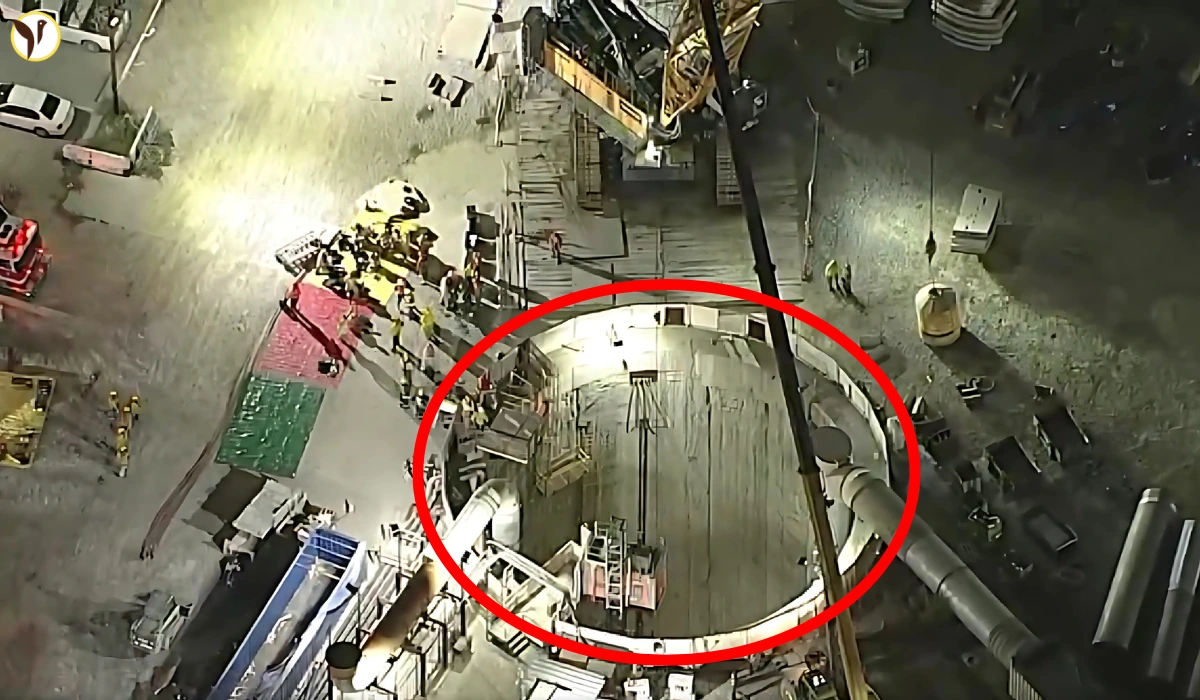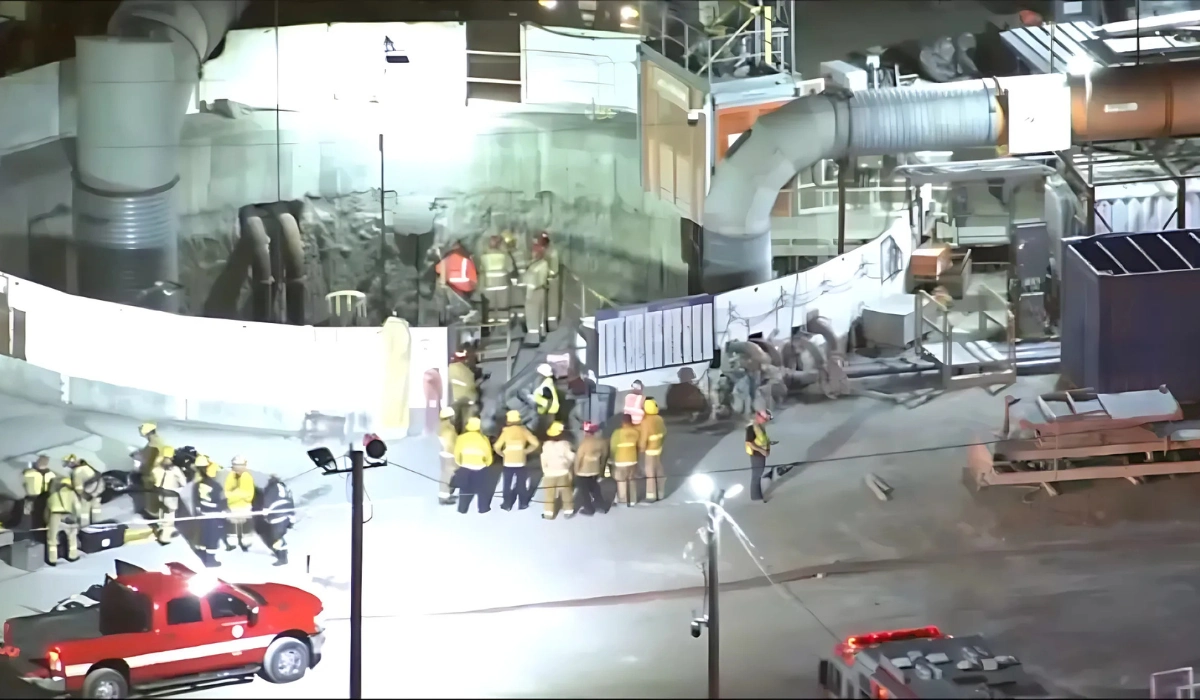On Wednesday night in Wilmington, Los Angeles, a tunnel being built for the city’s wastewater system collapsed, trapping 31 workers underground for nearly two hours. Thankfully, all of them are out alive and unhurt, but the incident left many in shock—and raised big safety questions.
Scene of the Collapse: What Happened and Where
It happened near the only access point at the 1700 block of North Figueroa Street. The tunnel sits deep, about 450 feet underground, stretching nearly six miles south from the entrance. Around 8 p.m., some loose soil caved in, blocking a part of the 18-foot-wide tunnel and isolating the workers.
They scrambled—literally. It’s reported they climbed over a 12–15‑foot mound of dirt to reach a safer area. Then, in small groups, they were driven back to the entry point using a tunnel vehicle. Once near the opening, a crane lifted them up in a cage-like elevator, known as a “bird cage.” Emergency teams were fully ready.
Rescue Efforts: Bravery and Technology
More than 100 firefighters from LAFD responded—including the Urban Search & Rescue team trained for confined spaces. They worked fast.
A tweet from ABC7 News said: “Over 100 LAFD personnel are attempting to rescue more than a dozen trapped workers following a tunnel collapse in the Wilmington area…”
Over 100 LAFD personnel are attempting to rescue more than a dozen trapped workers following a tunnel collapse in the Wilmington area of Los Angeles. Eyewitness News is live with the latest details - tonight at 11 from ABC7. https://t.co/bWetoyEd1P pic.twitter.com/VIex6wx4IV
— ABC7 Eyewitness News (@ABC7) July 10, 2025
Later, Spectrum News posted that all 31 workers had been rescued alive with no visible injuries, though many were checked out by paramedics.
Why This Tunnel Matters: Beyond the Collapse
It's not just a tunnel, it's part of the $630.5 million Clearwater Project, which is managed by L.A. County Sanitation. When completed, the Clearwater Project will connect the Hyperion Water Reclamation Plant to the ocean to recycle wastewater for drinking water. Construction started in 2021, with project completion planned for late 2027.
The tunnel replaces antiquated pipes built in 1937 and 1958 and is overworked. The proposed scope of the project can influence the water resources in L.A.'s future.
What We Still Don't Know (But Should)
- What caused the soil to drop? There is no official cause.
- Are any old irrigation lines in the area contributing to the slide? According to some local people, there were old irrigation lines, but officials did not acknowledge any nearby.
- How safe is their rescue equipment being used above ground? There were reports on radios, lighting, and sensors—but no specifics were ever made available.
- Will the safety equipment become a standard? This is uncertain, but many people want it to be a standard after the close call.
All workers were reported safe today, but experts say it is recommended to do a follow-up study to determine why the drop occurred—and how to prevent it from happening again.
Workers say they stayed calm and stuck together. One survivor said they used their phone lights to guide each other. Despite being trapped in the dark, they didn’t panic. That level-headedness, some say, helped prevent injuries and gave rescuers a clear path to help.
What Comes Next: Safety and Oversight
Expect these:
-
Soil and structural tests at the site and nearby zones.
-
Safety audits for all similar tunneling zones in L.A.
-
Adopting escape tech like tanks, sensors, or extra emergency lighting.
-
New training drills for crews working underground.
The city may also set up temporary safety zones once work resumes. And residents may see extra traffic or closures around the area.
Quick Facts You Should Know
-
Tunnel diameter: 18 ft, depth: approx. 450 ft
-
Access: only one entry/exit point
-
Collapse zone: ~6 miles from entry
-
Rescue team: 100+ firefighters, including Urban Search & Rescue
-
Affected project: $630M Clearwater Tunnel
-
Workers rescued: 31, all safe and medically evaluated
Why You Should Care
-
If you live or travel in the Harbor area—be aware of possible closures or alerts.
-
This shows how advanced rescue tech can change outcomes.
-
Highlights dangers when tunneling near old water or irrigation systems.
-
Emphasizes human unity under pressure—workers helped each other survive.










